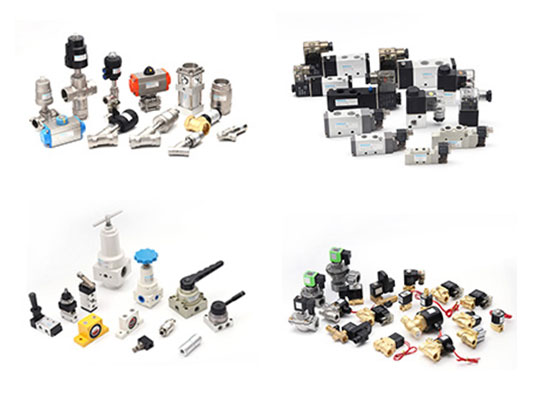
The working principle of pneumatic valves is based on controlling the flow and direction of compressed air.
The valve body, valve core, spring, and sealing components work together to either open or close the airflow paths, directing the air to different parts of the system.
Pneumatic valves generally operate in the following ways:

Involves physically turning a valve handle or pulling a control lever to change the airflow.
Solenoid valves are controlled by electrical signals, offering automation for complex systems.
The valve is controlled by external air pressure, commonly used in more intricate pneumatic systems.
Uses mechanical devices like levers or buttons to operate the valve, typically found in simpler or emergency systems.
Pneumatic valves play a vital role in many industries and applications, being used in automation, robotics, packaging machinery, automotive manufacturing,
chemical processes, food processing, textiles, and medical devices.
Some of the key applications include:
neumatic valves control cylinders and actuators, enabling automated production lines.
neumatic valves regulate robotic joint movements and precise positioning.
In these systems, pneumatic valves control airflows and pressure, ensuring smooth and stable operation.
Pneumatic valves regulate airflow and pressure to ensure the proper functioning of equipment.
Pneumatic valves provide rapid air release to stop operations in critical situations, ensuring safety.
At Fokca, we specialize in providing high-quality pneumatic valves that meet international standards.
Our valves are engineered for durability, precision, and reliability, offering customized solutions to fit your specific needs.
Whether you require standard valves or specialized options, our professional team is ready to assist in providing the best solutions for your pneumatic systems.
All Product Categories
FOKCA ©1998-2025 All Rights Reserved Sitemap